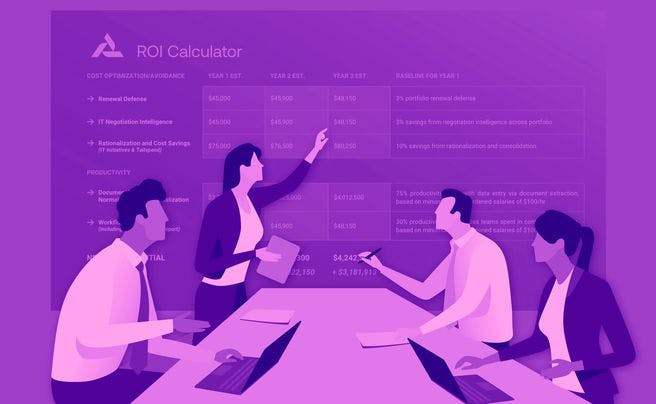Terzo, a Los Angeles-based company that combines artificial intelligence (AI), machine learning (ML), and natural language processing (NLP) for data extraction to provide contract intelligence to business leaders at the enterprise level, claims it is pioneering vendor relationship management (VRM) technology for enterprise customer relationship management (CRM).
VentureBeat connected with Brandon Card, CEO and cofounder at Terzo, to discuss what he calls “a different version of vendor intelligence, or business intelligence for the vendor ecosystem” — as well as the leverage the company’s technology provides to technical decision-makers in the data ecosystem.
Key vendors, inadequately managed
Third-party vendors have long been the lifeblood of businesses of all sizes. From outsourced production to outsourced tasks — from the procurement department to the desk of the CIO — sourcing and securing vendors is a mission-critical activity. However, with increased digitization across enterprises, especially following the COVID-19 pandemic, business is changing at a rapid rate.
For example, software-as-a-service (SaaS) has predictably matured, and customer demand has increased for SaaS experiences, both internally and externally. Software is a key driver or facilitator of most business operations, including product management, finance, marketing, customer success, systems, sales, and so on. In tandem with this development has been the everyday use of technologies that incorporate machine learning (ML), artificial intelligence (AI), and more.
Bottom line? As technology advances, specialized services are required to go to market with sophisticated offerings. Almost no business will develop an in-house department to manage every component of the tech stack. Instead, they hire vendors. As the specialties increase, so does the vendor count. This single illustration is replicated over and over in every industry in every business in the world. Crucial though they may be, vendors are usually not managed or mismanaged. There are three major consequences to this reality, according to Card.
1. Siloed and inaccessible data
The rate of innovation in the last decade has been fast, but many of the vendors and contractors who support it have paper contracts in file cabinets and exist as an entry on a spreadsheet. A 2020 Deloitte survey showed that 90% of organizations rate visibility into extended supply networks as being moderate or very low. Several companies, Card noted, have neither a centralized database of vendor contracts nor an efficient way to analyze data.
2. Limited growth
Strategic vendors are critical to driving transformation but innovation projects can be difficult to plan, govern, and scale. Disparate data and unknown stakeholders slow down the decision-making process, making it impossible to progress at a competitive pace.
3. Limited supplier collaboration
Vendors provide valuable goods and services. In fact, most companies’ operations would be disrupted if even a handful of vendors dropped out. Outdated or inefficient systems undercut this important relationship, often making it impossible to even find contact information for a supplier, much less communicate directly with a point person.
A new way: vendor relationship management
While Terzo has competition in incumbent players that have been in the industry for several years, like SAP, Oracle, and IBM, Card says their legacy technologies don’t provide the same level of capabilities that Terzo does.
Mimicking the qualities of a customer relationship management (CRM) system long used by marketers, Terzo claims its VRM platform addresses the challenges of managing vendor relationships by doing the following:
1. Making data visible and comprehensible
According to Card, Terzo’s VRM platform combines machine learning (ML) and natural language processing (NLP) to first analyze the language and inventory data found in contracts. This goes beyond digitization, enabling better data storage/access, interpretation, analysis, and sharing.
“We provide intelligence to see all the contracts in the ecosystem, across the suppliers, and all of their commitments, so leaders can also optimize their future plans and forecast accurately,” Card said.
2. Unlocking growth opportunities
A McKinsey survey of over 100 large organizations in various sectors indicated that “companies collaborating regularly with suppliers demonstrated higher growth, lower operating costs, and greater profitability than their industry peers.” Such a staggering effect shows why vendors shouldn’t just be handled in transactional interactions — as they’re relationships that contribute to long-term strategy and growth opportunities
Terzo’s VRM framework extracts data using a multi-OCR approach with NLP, then correlates inventory data like software licenses and usages. The goal, explains Card, is to highlight areas to rationalize spending or to find digital transformation opportunities. It isn’t just about what a vendor does today, but about the future and potential, and only with the right tools can that insight be unlocked.
McKinsey’s survey shows the big potential that vendor relationship management presents. And now, with Terzo, Card says, the needed tools are here.
3. Collaborating to innovate
It’s a mistake to think of vendors as nameless, faceless entities. Rather, they should be seen as valuable partners in growth. Card explains it like this: “You need to build trust with the strategic vendors you rely on so you can get the most out of the products and services they offer. More importantly, organizations recognize vendor collaboration as the most effective path to faster innovation.” A 2020 survey by McKinsey of 100 large organizations reported that companies that regularly collaborated with suppliers had higher growth, lower costs of operation, and greater profitability than industry peers.
4. IT portfolio optimization
Card says IT portfolio optimization is one of the core things Terzo’s contract intelligence platform helps their customers to do. Terzo’s platform enables organizations to identify redundancies and duplications in their environments, effectively saving them cost.
“What’s happened in the last few years was that organizations procured several similar products and services, wasting money on duplicate solutions in their environments. A prime example is how organizations use collaboration and productivity tools like Slack, Webex, Zoom, and Microsoft Teams. These are all overlapping technologies that lead to a ton of waste. IT profile optimization helps our customers identify and eliminate this waste — saving them money,” explained Card.
Terzo’s AI-powered contract intelligence platform aims to solve today’s unstructured data challenge by breaking silos and helping organizations find exactly where their technologies overlap. The company says this gives enterprises the insights they need to “unlock innovation, improve governance, increase collaboration, and optimize investments.”
Adding a new focus in 2022
Although Terzo has been focused on contract intelligence since inception, Card says the company will add a new focus next year — bringing in all the compliance and risk data around contracts.
“As part of our contract performance module, we will roll out what we call ‘contract compliance’ or ‘vendor scorecarding’ in 2022. We are going to use data to show our customers where their high-risk contracts are and where their low-risk contracts are,” he added.




